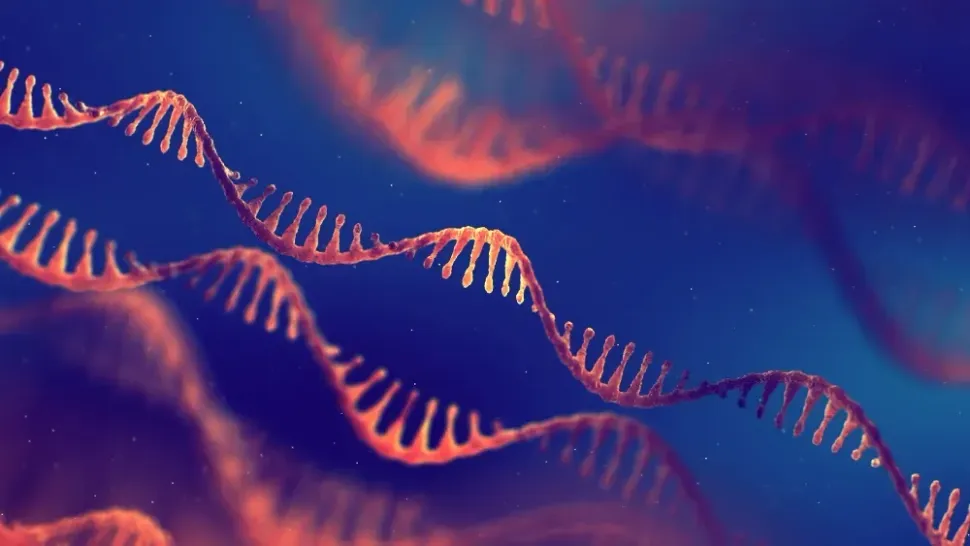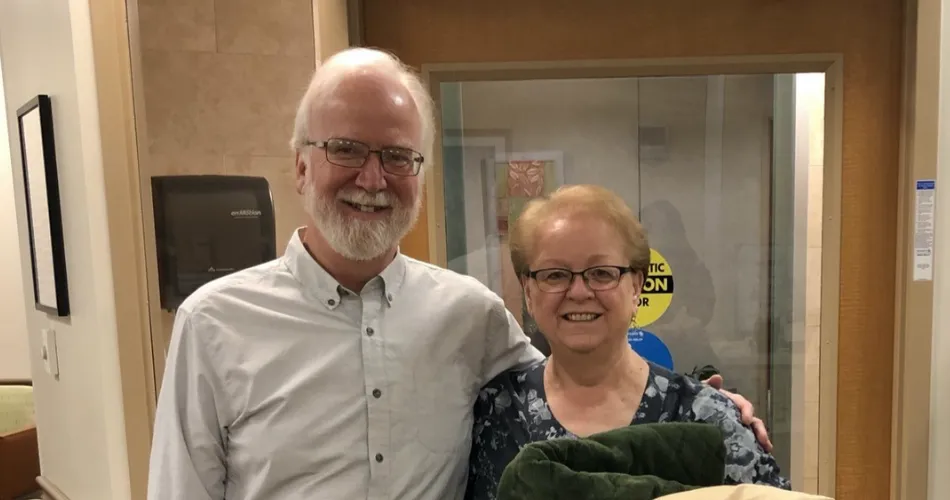Single Cell Sequencing in Myeloma

Dr. David Coffey, a myeloma specialist and researcher, met with the Immunotherapy Treatment Chapter on June 21, 2023, to discuss his research in single-cell sequencing.
He is a physician-scientist at the Sylvester Comprehensive Cancer Center and the University of Miami. As a medical oncologist, he specializes in treating patients with multiple myeloma. His research is focused on understanding the interactions between myeloma tumor cells and the immune system.
Leveraging his skills in computational biology, Dr. Coffey has developed analytical techniques to investigate the cells within the tumor microenvironment using single-cell gene expression profiling and DNA sequencing. He aims to understand how the immune system may fail to prevent myeloma progression and learn new ways to harness the immune system’s power to eliminate the disease more effectively.
What is Single Cell Sequencing in Myeloma?
The immune microenvironment consists of the immune cells and the tumor cells in the bone marrow and blood of patients with multiple myeloma. Dr. Coffey and his team use sophisticated technology to interrogate the bone marrow microenvironment called single-cell sequencing. This allows them to do gene expression profiling of each cell in the sample.
That allows them to characterize that cell to determine what kind of cell it is. Is it a T-Cell? A Natural Killer Cell? Or is it a myeloma cell? And then they can get a sense of what that cell is doing. Is it activated and likely to kill a tumor cell? Or is it quiet and not likely to do anything?
What is the Purpose of Single Cell Sequencing?
Once researchers can categorize and type all the different types of cells within the immune microenvironment, they can compare different periods, for example, comparing their immune microenvironment before any treatment versus after the treatment.
Perhaps even more exciting, they can use single-cell sequencing to analyze different myeloma populations.
For example, researchers could say, "This group of myeloma patients have consistent changes in the Natural Killer Cells over time, but there is a certain subgroup that didn't experience these changes, and that group didn't get a good outcome."
Scientists can find those kinds of patterns in the immune system (across time and patient populations) to learn why the treatment is failing (or working), and decide what patients might benefit most from some immunotherapy versus another.
They also use this technology to study myeloma at its earliest phase, MGUS (monoclonal gammopathy of undetermined significance), or smoldering myeloma. This technology allows experts to determine which patients (or groups of patients) are more likely to progress to active disease.
We could finally see the answer to a common question: what makes a patient with precursor conditions more likely to develop myeloma versus not?
Most of the research has only looked at tumor cells to answer this question, but Dr. Coffey and his team believe that the immune system also plays a really important role. The immune system may enable some cancers to grow faster than others, or some immune systems are stronger and prevent it from happening altogether.
How Long Does Single Cell Sequencing Take?
- A machine sucks up cells through a microfluidic circuit and sorts them into little oil droplets.
- A chemical reaction in each oil droplet "barcodes" each of the individual molecules inside the cell and "barcodes" the cell itself.
- The oil droplets are analyzed. All of the molecules are tagged to identify what cell they came from and what kind of molecule they are.
- Scientists sequence those molecules and then use computer software to be able to put it all back together again.
All of these steps happen in a period of hours. To do it on lots of patients requires months because it takes a long time to process one sample at a time.
Is it Possible to Know Where Cells Are in Relationship to Each Other?
Physicians take core samples of the bone marrow (in which myeloma is present) and then slice them. Those samples are then put on slides. Using an emerging technology called spacial transcriptomic, researches can determine the expression profile of each cell in that biopsy.

They can determine the expression of that single cell, AND its positional relationship to all the other cells. It's like having an address to where it came from.
Once its positional relationship is known, researchers can ask, "Are there certain cell types that like to hang out with each other? If they are hanging out with each other, are they communicating? And if they are communicating, they could be sending growth signals to each other or telling the other cell to die?"
Those are the type of questions that scientists, researchers, and physicians try to tease out using spacial transcriptomics.
Conclusion
This is exciting tech to watch as we learn more about the relationship between the immune system and myeloma.
This technology could:
- Determine which precursor (MGUS and smoldering) patients progress to active myeloma
- Guide precision medicine in myeloma
- Help us understand what subgroups are responding poorly to immunotherapies or novel treatments
- Focus on genetic translocations and who responds the best to specific therapies
Myeloma patients and caregivers can look forward to these exciting and vital discoveries.
Check out these other HealthTree resources on immunotherapy treatments for myeloma:
Innovative Immunotherapy with Nobel Prize Winner Dr. James Allison
What is the Immune System and Immunotherapy in Multiple Myeloma?
Blood-Based Single Cell Sequencing Holds the Key to Better Treatment Outcomes
Dr. David Coffey, a myeloma specialist and researcher, met with the Immunotherapy Treatment Chapter on June 21, 2023, to discuss his research in single-cell sequencing.
He is a physician-scientist at the Sylvester Comprehensive Cancer Center and the University of Miami. As a medical oncologist, he specializes in treating patients with multiple myeloma. His research is focused on understanding the interactions between myeloma tumor cells and the immune system.
Leveraging his skills in computational biology, Dr. Coffey has developed analytical techniques to investigate the cells within the tumor microenvironment using single-cell gene expression profiling and DNA sequencing. He aims to understand how the immune system may fail to prevent myeloma progression and learn new ways to harness the immune system’s power to eliminate the disease more effectively.
What is Single Cell Sequencing in Myeloma?
The immune microenvironment consists of the immune cells and the tumor cells in the bone marrow and blood of patients with multiple myeloma. Dr. Coffey and his team use sophisticated technology to interrogate the bone marrow microenvironment called single-cell sequencing. This allows them to do gene expression profiling of each cell in the sample.
That allows them to characterize that cell to determine what kind of cell it is. Is it a T-Cell? A Natural Killer Cell? Or is it a myeloma cell? And then they can get a sense of what that cell is doing. Is it activated and likely to kill a tumor cell? Or is it quiet and not likely to do anything?
What is the Purpose of Single Cell Sequencing?
Once researchers can categorize and type all the different types of cells within the immune microenvironment, they can compare different periods, for example, comparing their immune microenvironment before any treatment versus after the treatment.
Perhaps even more exciting, they can use single-cell sequencing to analyze different myeloma populations.
For example, researchers could say, "This group of myeloma patients have consistent changes in the Natural Killer Cells over time, but there is a certain subgroup that didn't experience these changes, and that group didn't get a good outcome."
Scientists can find those kinds of patterns in the immune system (across time and patient populations) to learn why the treatment is failing (or working), and decide what patients might benefit most from some immunotherapy versus another.
They also use this technology to study myeloma at its earliest phase, MGUS (monoclonal gammopathy of undetermined significance), or smoldering myeloma. This technology allows experts to determine which patients (or groups of patients) are more likely to progress to active disease.
We could finally see the answer to a common question: what makes a patient with precursor conditions more likely to develop myeloma versus not?
Most of the research has only looked at tumor cells to answer this question, but Dr. Coffey and his team believe that the immune system also plays a really important role. The immune system may enable some cancers to grow faster than others, or some immune systems are stronger and prevent it from happening altogether.
How Long Does Single Cell Sequencing Take?
- A machine sucks up cells through a microfluidic circuit and sorts them into little oil droplets.
- A chemical reaction in each oil droplet "barcodes" each of the individual molecules inside the cell and "barcodes" the cell itself.
- The oil droplets are analyzed. All of the molecules are tagged to identify what cell they came from and what kind of molecule they are.
- Scientists sequence those molecules and then use computer software to be able to put it all back together again.
All of these steps happen in a period of hours. To do it on lots of patients requires months because it takes a long time to process one sample at a time.
Is it Possible to Know Where Cells Are in Relationship to Each Other?
Physicians take core samples of the bone marrow (in which myeloma is present) and then slice them. Those samples are then put on slides. Using an emerging technology called spacial transcriptomic, researches can determine the expression profile of each cell in that biopsy.

They can determine the expression of that single cell, AND its positional relationship to all the other cells. It's like having an address to where it came from.
Once its positional relationship is known, researchers can ask, "Are there certain cell types that like to hang out with each other? If they are hanging out with each other, are they communicating? And if they are communicating, they could be sending growth signals to each other or telling the other cell to die?"
Those are the type of questions that scientists, researchers, and physicians try to tease out using spacial transcriptomics.
Conclusion
This is exciting tech to watch as we learn more about the relationship between the immune system and myeloma.
This technology could:
- Determine which precursor (MGUS and smoldering) patients progress to active myeloma
- Guide precision medicine in myeloma
- Help us understand what subgroups are responding poorly to immunotherapies or novel treatments
- Focus on genetic translocations and who responds the best to specific therapies
Myeloma patients and caregivers can look forward to these exciting and vital discoveries.
Check out these other HealthTree resources on immunotherapy treatments for myeloma:
Innovative Immunotherapy with Nobel Prize Winner Dr. James Allison
What is the Immune System and Immunotherapy in Multiple Myeloma?
Blood-Based Single Cell Sequencing Holds the Key to Better Treatment Outcomes

about the author
Audrey Burton-Bethke
Audrey is a content writer and editor for the HealthTree Foundation. She originally joined the HealthTree Foundation in 2020. Audrey loves spending time with her supportive husband, energetic four-year-old, and new baby.
More on Treatment Advances
Trending Articles




Get the Latest Multiple Myeloma Updates, Delivered to You.
By subscribing to the HealthTree newsletter, you'll receive the latest research, treatment updates, and expert insights to help you navigate your health.
Together we care.
Together we cure.
3x Faster.











